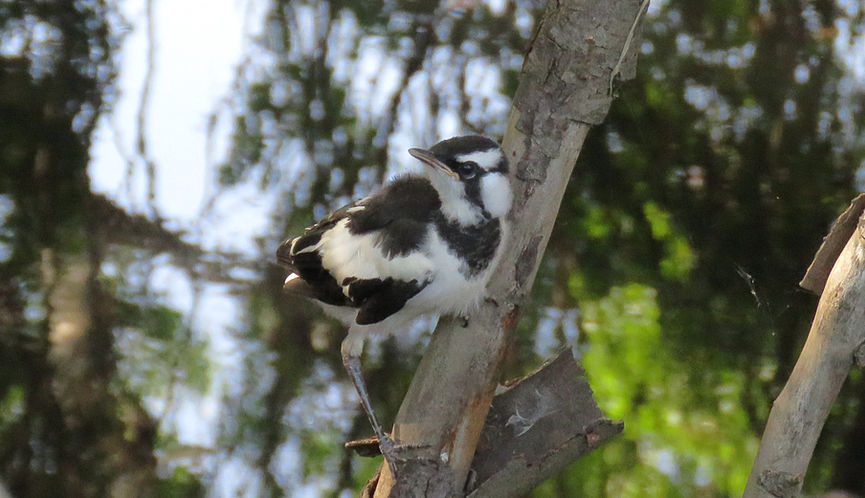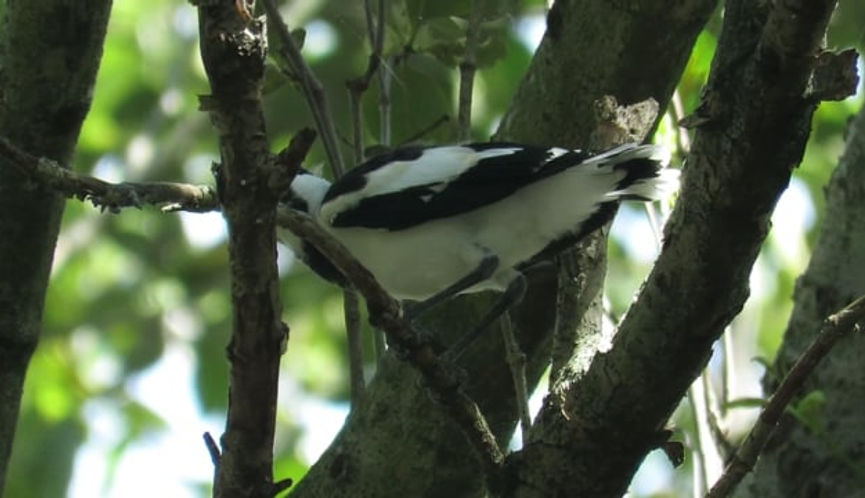Magpie-lark
Grallina cyanoleuca
Quick facts
Other names: Peewee, Mudlark, Murray Magpie.
Size: Smaller than Magpie (two-thirds size), similar to Noisy Miner.
Range and lifestyle: Throughout Australian mainland; some live in permanent territories, while others migrate in large flocks to northern Australia for winter.
Food: Small insects and their larvae; occasionally grass seeds.
Breeding: Spring and early summer. Nest is deep bowl of mud on horizontal branch. Eggs 3-4, white with dark brown freckles; incubated by both parents over 18 days. The chicks are fed in the nest for about 3 weeks.
Like the more familiar Australian Magpie, the much smaller Magpie-lark is a frequent visitor to urban parks and playing fields, where it spends hours on the ground, searching for small insects in the grass. Rather than stopping and starting like the Magpie, however, it walks almost continuously, and its stance is more horizontal, with characteristic back and forward movements of the head. Also like the magpie, the Magpie-lark owes the first part of its name to its pied (black-and-white) plumage, while the second part probably refers to a British songbird, the Songlark, though this bird has little in common with the Magpie-lark!
But this bird has two other commonly-used names, each with its own story. One of the oldest names is Peewee (or Pee-wit), which derives from its loud piercing song “peewee-peewee-peewee”. Both males and females sing, but as well as calling alone (solo songs), pairs often perform duets, in which they call alternately (antiphonal song), one immediately after the other, and often raising their wings as they call. These duets are so well coordinated that they appear to come from a single bird, e.g. “peewit (Bird A), qwark (Bird B), peewit (A), qwark (B) peewit (A), qwark”.
Another old name is Mudlark, which refers to the species’ nest. The Magpie-lark is one of only three species of songbirds in Australia that builds a large nest composed mainly of mud, but mixed with straw. Both mum and dad make the nest, taking turns to add wet mud usually collected from the edge of nearby pools of water. For many years it was assumed that the three Australian mud-nest builders were close relatives, until a study of their DNA revealed that the nearest relative of the Magpie-lark was a small flycatcher living in mountain streams of New Guinea!
Males and females are easily distinguished by their head markings. Males have a black face and throat, and a white “eyebrow”, whereas females have a white face and throat, and a black line running down through eye. Young birds show white throat of mum and white eyebrow of dad, but have dark instead of white eyes.
Text © Richard Noske 2018 CC BY-NC-SA























